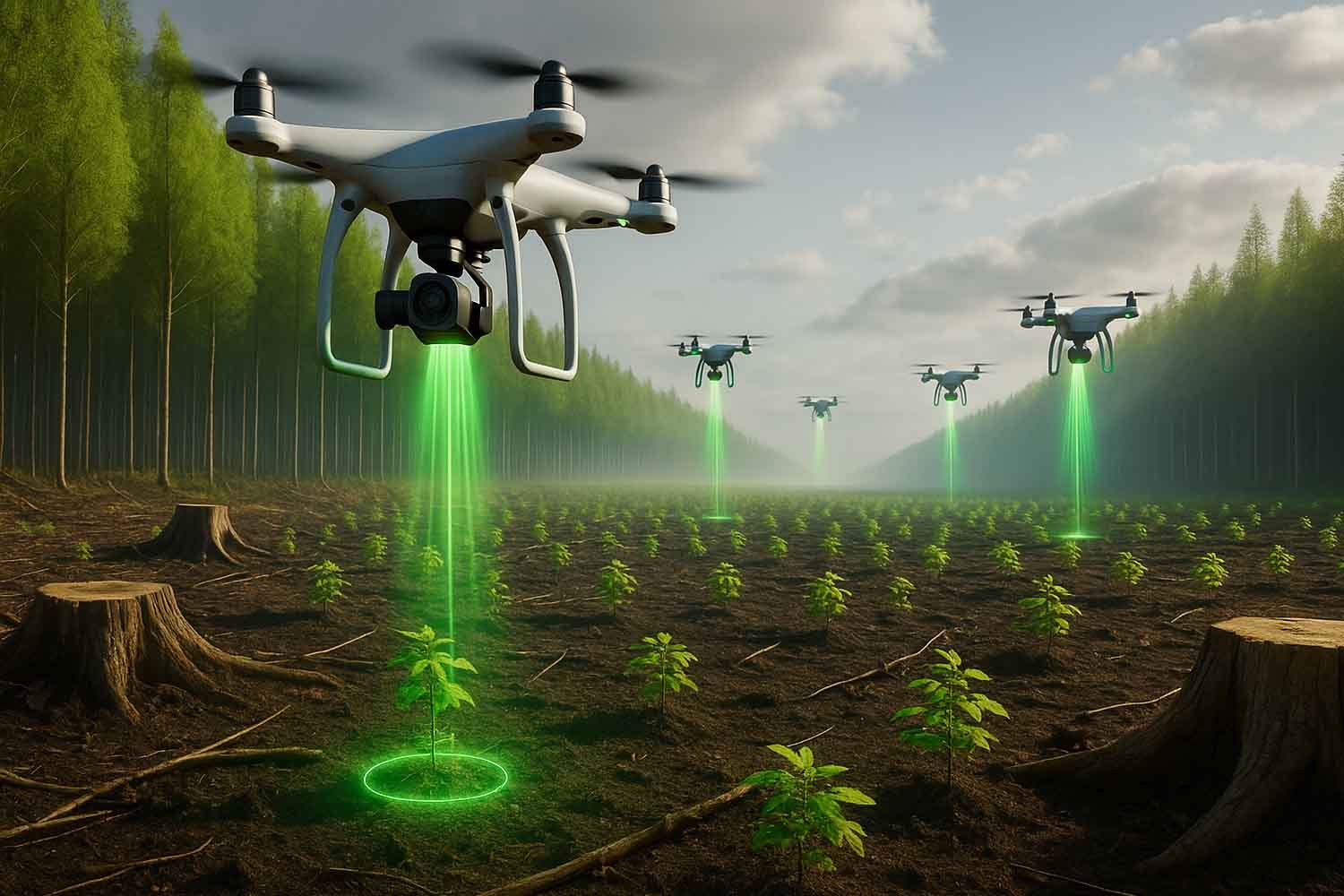Japan's AI-powered drones are revolutionizing reforestation, blending cutting-edge technology with deep respect for nature to tackle climate change and regenerate ecosystems.

In Japan’s ancient forests, where Shinto spirituality lives among towering cedars and whispering pines, a green revolution is taking flight. Autonomous drones, powered by artificial intelligence (AI), are radically transforming how the country tackles reforestation. Flying over lands devastated by wildfires or urban sprawl, these high-tech devices plant seeds at speeds up to ten times faster than human intervention.
Developed by engineers in Kyoto, this innovation is not merely about replenishing forests with trees. It represents a true process of ecosystem revival, one biodegradable capsule at a time.
Precision technology: drones that bring new life
The principle behind the drones’ technology is both simple and sophisticated. Equipped with LiDAR, a laser mapping system, the drones analyze every aspect of the terrain: moisture, soil composition, and landscape. Onboard AI processes this real-time data, identifying the ideal spots to plant native seeds. Each drone can carry hundreds of biodegradable capsules, filled with seeds, nutrients, and symbiotic fungi that promote growth even in challenging conditions.
With a sound resembling a “pop,” the capsules are shot into the ground, covering an area as large as a soccer field in less than an hour. In tests conducted in Kumamoto, a region heavily affected by wildfires, 80% of the seeds sprouted—an extraordinary success rate that far exceeds the 30-50% germination typical of manual methods.
For foreign residents or travelers intrigued by Japan’s blend of tradition and innovation, watching these drones silently glide over mist-covered hills might seem like something from a sci-fi film. Yet, this technology embodies the Japanese balance between respect for nature and technological progress.
Honoring tradition with cutting-edge technology
According to Shintoism, forests are home to kami, protective spirits of the land. The advent of this technology does not conflict with tradition; rather, it enhances it by offering a modern solution to pressing issues such as climate change, wildfires, and soil degradation. Powered by mobile solar stations, the drones move in swarms, adapting to the terrain in real-time without damaging the environment.
A japanese model to export globally
Japan’s technological rigor is evident in this initiative. Just as with the Shinkansen trains or robotics, reforestation is approached with precision and systematic planning. Unlike other countries where drone-based reforestation is still experimental or underdeveloped, Japan has already scaled this technology to large operations.
Each drone can carry over 300 capsules, and their collective action is setting new global standards. In the future, these drones could fly over the Amazon or desertified regions of Africa, adjusting to local seeds and climates. However, the project remains deeply rooted in Japanese philosophy, blending engineering with a sacred reverence for nature.
The impact of these drones goes beyond planting trees. In Kumamoto, for example, capsules containing mycorrhizal fungi have improved soil quality, attracting insects and animals that contribute to the forest’s natural regeneration. This process also aids in carbon capture, a key factor in the fight against climate change.
For tourists visiting Japan’s countryside, witnessing the return of greenery to once-burned hills offers a unique experience. It is not just about conserving cherry blossoms or bamboo forests but ensuring a resilient future for the entire region.
Local involvement and challenges ahead
Despite its success, there are hurdles to overcome. Expanding the project nationally and internationally requires significant investment, while regulations such as airspace restrictions could slow its spread. Furthermore, each ecosystem has its own unique characteristics, and for Japan—an archipelago with a wide variety of microclimates—this adaptability will be crucial.
For foreign residents in cities like Tokyo or Osaka, drone technology highlights environmental challenges often overlooked in the urban rush. Participating in environmental volunteer projects or tech events can offer an opportunity to understand and contribute to this transformation.
Source: Japandaily
